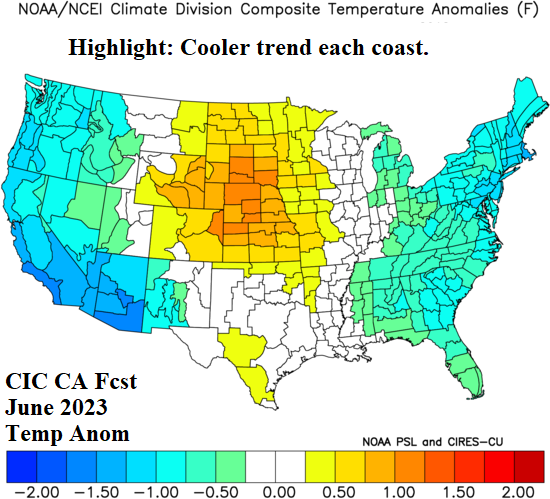
Marine Heat Waves Remain Dominant, Influence El Nino 2023-24
08/15/2023, 8:09 am EDT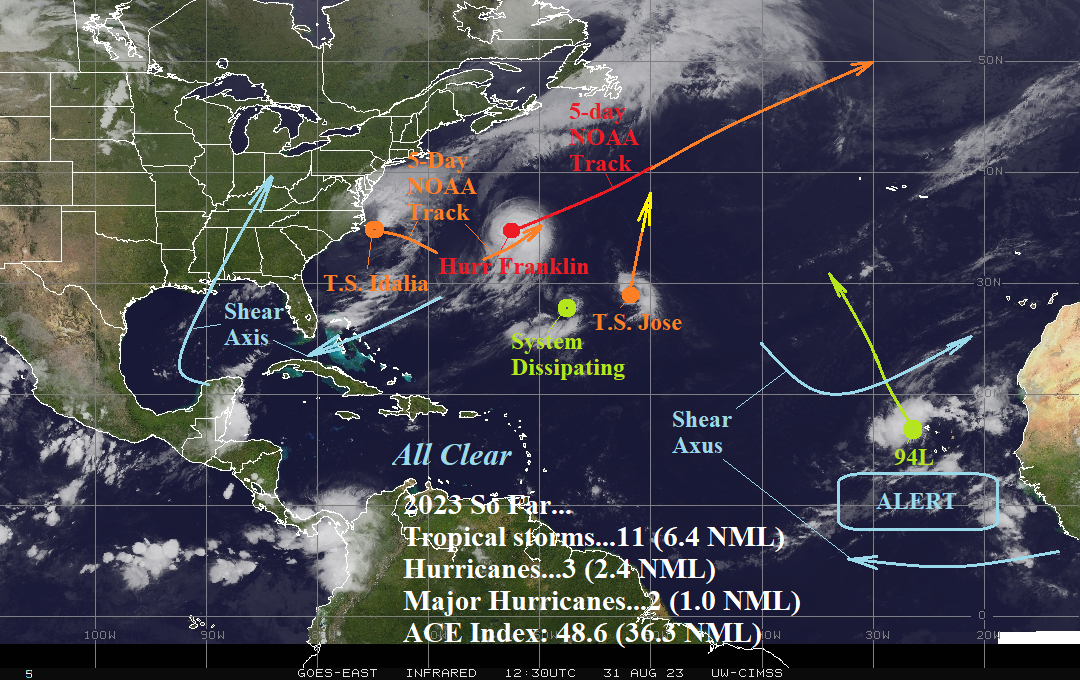
Based On ACE Index, 2023 About 33% More Active Than Normal So Far
08/31/2023, 10:36 am EDTDiscussion: Let’s take a quick look at verification of constructed analog forecasts, made in late April, for June and July 2023. A constructed analog forecast is based on regional SSTA patterns and their historical relationship to upper air patterns that drive our sensible weather. Traditionally, the El Nino southern oscillation (ENSO) is a primary driver of climate forecasts. However, given the warming of the mid-latitude ocean of the past 1-2 decades, SSTA outside of the tropics now weighs heavily on explaining and forecasting climate patterns (globally). Of course, soil moisture and snow cover are also very important.
June 2023 was much cooler than normal across California and the Southwest U.S. plus much of the East U.S. (Fig. 1). The cool pattern in these locations were related to cool SSTA patterns associated with the cool phase of the Pacific decadal oscillation off the West Coast and surprise evolution of the North Atlantic warm hole (NAWH) off the Northeast Coast. In-between the two upper troughs, the Upper Midwest/Midwest U.S. was warmer and drier than normal (Fig. 2). The Climate Impact Company constructed analog (CIC-CA) forecast for June indicated the cool weather on each coast (Fig. 3) and the dryness developing in the Midwest U.S. (Fig. 4).
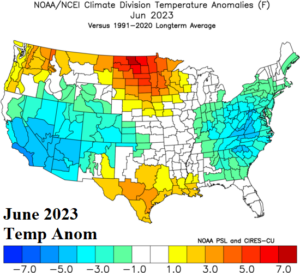


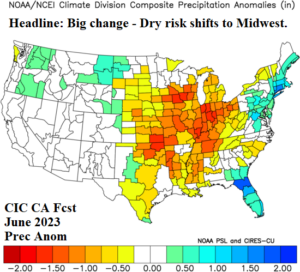
Fig. 1-4: June 2023 temperature and precipitation observations (upper) and the CIC-CA forecast issued in late April (lower).
In July, the pattern reversed with the West/Southwest U.S. (and Texas) hotter than normal including the remainder of the Gulf States to Florida and New England also shifting somewhat warmer than normal (Fig. 5). The Mid-south and Northeast were much wetter than normal while dryness prevailed in the northwest Gulf region, Southwest U.S., and Upper Midwest (Fig. 6). The CIC-CA forecast issued in late April indicated a hot bias across the West and Southwest U.S. plus the East Coast and temperate conditions in the Midwest (Fig. 7). The CIC-CA rainfall forecast projected the Mid-South to Northeast rains (Fig. 8). Overall, the June and July forecast skill was good to excellent at projecting major climate regimes across the U.S. for early-to-middle meteorological summer 2023.
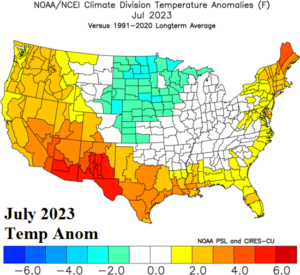
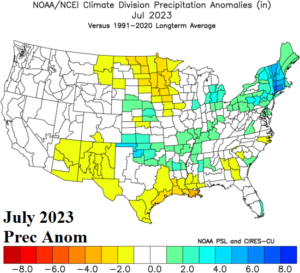
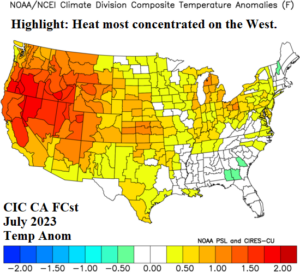
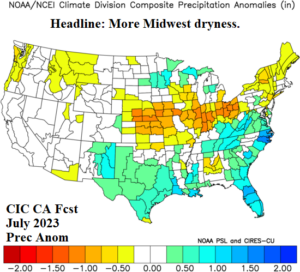
Fig. 5-8: July 2023 temperature and precipitation observations (upper) and the CIC-CA forecast issued in late April (lower).
![Climate-Impact-Company-logo-sm[1]](https://climateimpactcompany.com/wp-content/uploads/2023/08/Climate-Impact-Company-logo-sm1.png)
